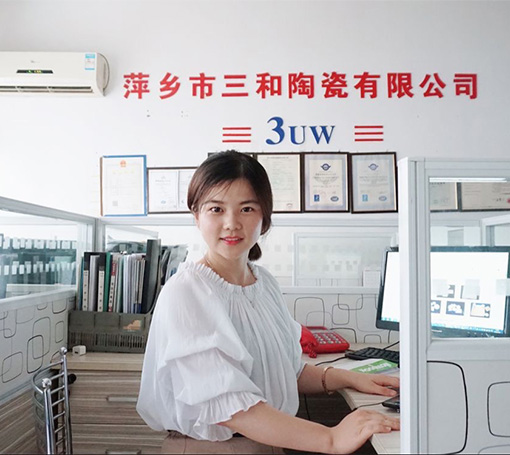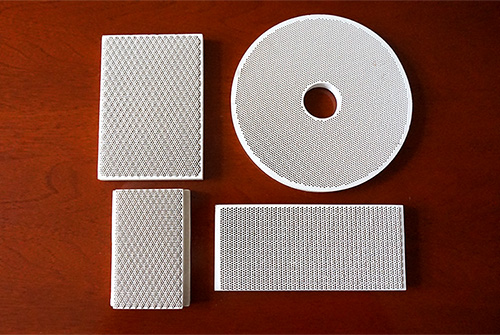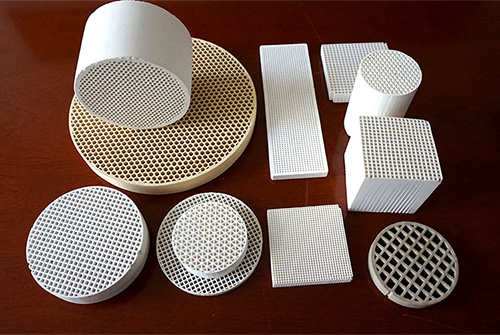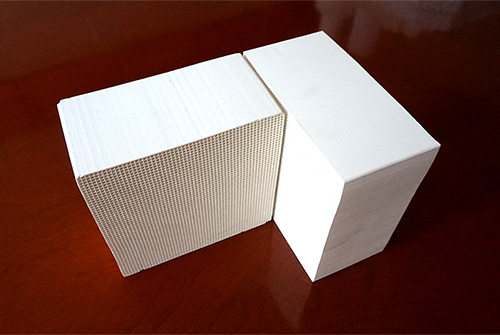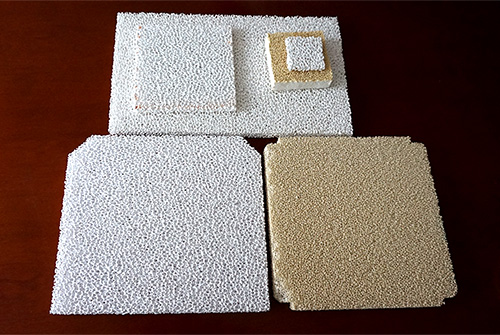Zirconia Foam Filter
Ceramic foam filters have a foam-like porous structure. They are made of refractory materials that are resistant to molten metal erosion. They are mainly used in the field of metallurgy and casting metal liquid filtration and purification to remove undesirable nonmetallic inclusions and reduce trapped gas that are contained in the casting. There are three ceramic foam filters, alumina, silicon carbide (SiC) and zirconia foam filters. They can be supplied in round, square, rectangular or other customized shapes with different pore sizes and porosities.
The applications include molten metal filtration, high temperature gas treatment, as a carrier of catalyst and as solid heat exchanger.
Alumina Foam Filters
These are typically used for purification of molten aluminum and aluminum alloys. This can be used without fear of failure upto as high as 1200oC. Typical characteristics include:
a) Pure White Color.
b) Application Temperature: ≦1,200oC.
c) Al2O3 Content: ≧65%.
d) Typically used in Molten Aluminum and Alloy Filtering.
e) Pore Size: 10 – 50 PPI.
Silicon Carbide Foam Filters
These are typically used to filter molten iron and alloys. They can be used to temperatures as high as 1500oC. Typical characteristics include:
a) Gray-Black Color
b) Application Temperature: ≦1,500oC
c) SiC Content ≧50%
d) Typically used in Molten Iron and Alloy Filtering
e) Pore Size: 10-35 PPI
Zirconia Foam Filters
These are used in molten steel and other alloys filtration. They can sustain very high temperatures up to 1700oC. Typical characteristics include:
a) Yellow Color
b) Application Temperature: ≦1,700oC
c) ZrO3 Content ≧ 70%
d) Typically used in Molten Stainless Steel and Alloy Filtration in precision molding.
e) Pore Size: 10 to 35 PPI
Typical Sizes
These products can be highly customized to have the sizes desired by the end user. These are typically made of Magnesium Silicate (commonly known as Steatite). They are characterized by their high rupture strength and dense body.
Ceramic foam filter is a special technology. It has a foam-like porous structure of ceramic products, and its light weight, chemical stability, large surface area through-hole rate, corrosion resistance, high strength, good thermal shock resistance characteristics. Divided into two shapes: round specifications, square specifications and weaving way: honeycomb.
Foam Ceramic Filter 5O Perating Principles.
Ceramic foam filter with a high temperature, corrosion resistance, resistance to molten metal erosion, high strength, high pass rate, and the characteristics of the large surface area is mainly used in the field of metallurgy and casting metal liquid filtration and purification. The flow of a mixture of molten metal passes through foam ceramic porous structure becomes uniform smooth clean molten metal filled the mold to remove the molten steel in the fineness of micron inclusions and some parcels gas reduce the erosion of the sand mold, and reduce product obsolescence rate. Ceramic foam filters can be made of different pore size and porosity, in order to obtain satisfactory filtration effect.
Ceramic Foam Material
Ceramic foam filter, depending on the materials: alumina foam ceramic filters, silicon carbide ceramic foam filter, zirconia ceramic foam filter, and magnesium oxide foam ceramic filter.
In the bronze casting process, the use of silicon carbide ceramic foam filter material is of SiC.
Steel castings uses zirconia ceramic foam filters. Zirconia ceramic foam filters material of ZrO2 zirconia. Zirconia heat-resistant temperature of the filter is higher than about 1760 ° C, with very high strength and excellent high-temperature impact.
Alumina ceramic foam filter products effectively remove solid-state mixed with the molten metal, so aluminum alloy can be successfully forged, aluminum foil manufacturing, extrusion processing technology, perfect aluminum products. 10ppi coarse porosity 70ppi of fine porosity range of options.
 English
English Español
Español Français
Français Русский
Русский
